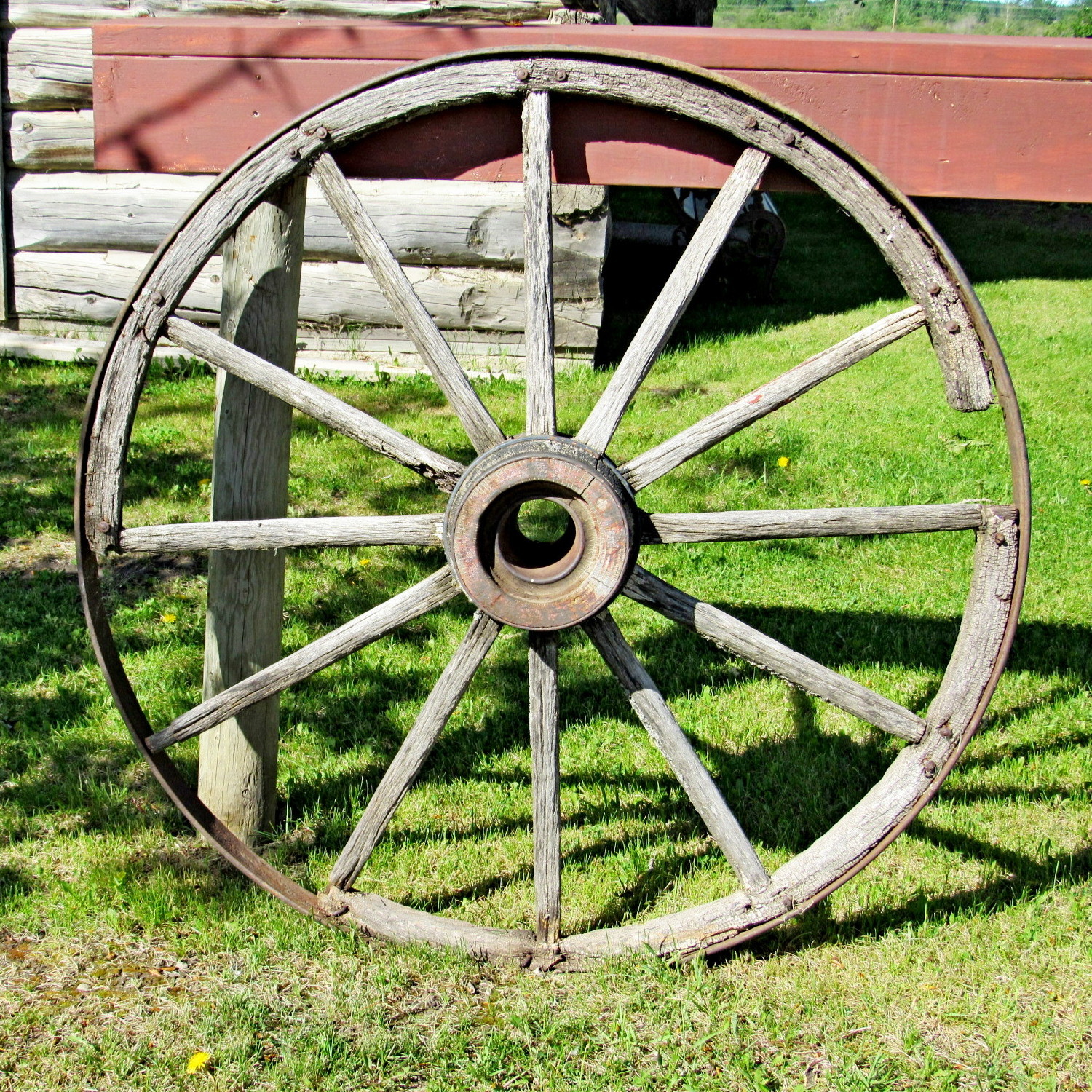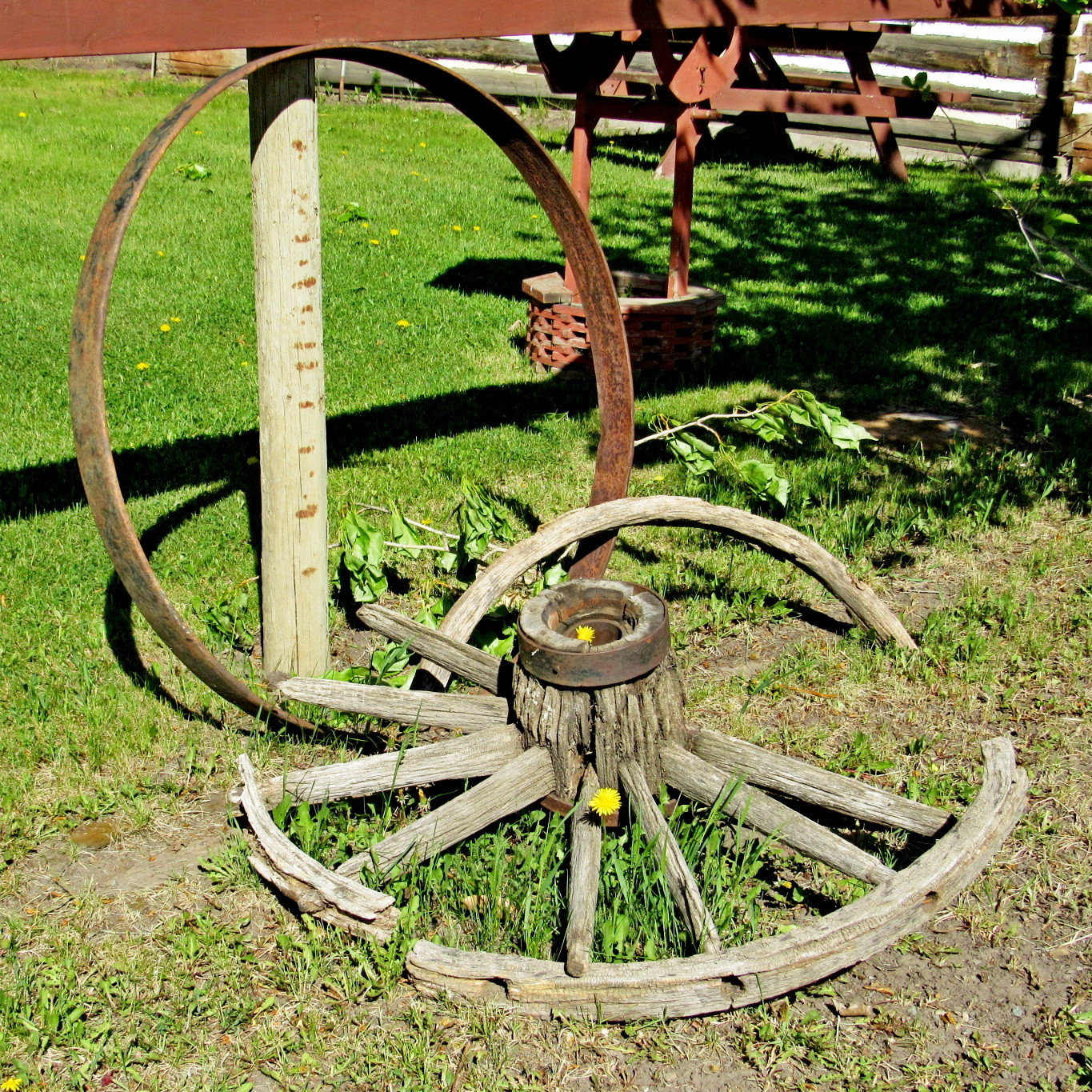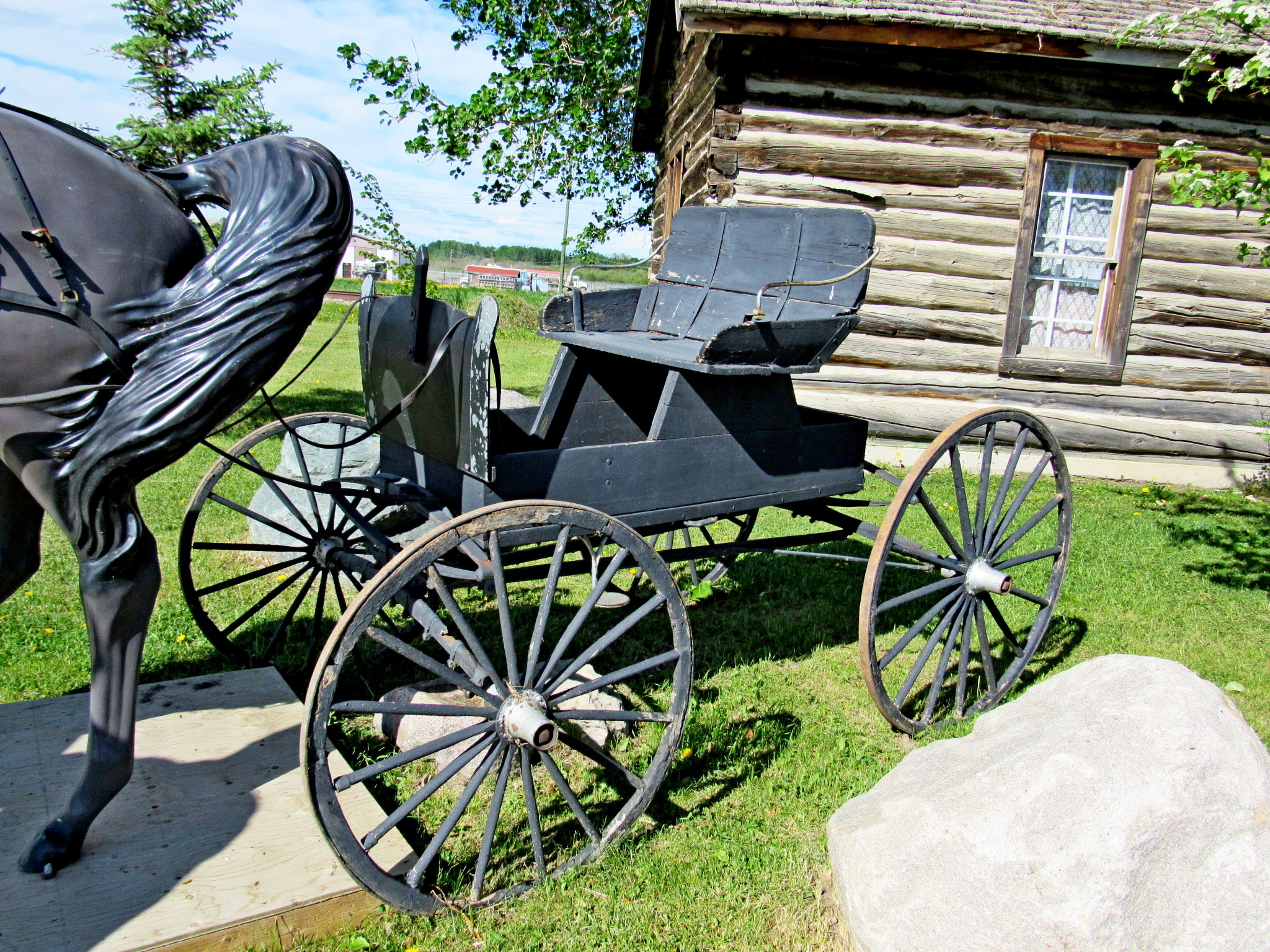
The Many States of Wagon Wheels - Hythe, AB
Posted by:  T0SHEA
T0SHEA
N 55° 19.583 W 119° 33.407
11U E 337795 N 6134089
It would seem that Wagon Wheels, like many other objects, occur in many varied states, some of which will be discussed here. The Hythe Museum and Archives happens to display Wagon Wheels which assume several of the possible states.
Waymark Code: WM116N5
Location: Alberta, Canada
Date Posted: 08/25/2019
Views: 3
Possibly the most common state in which a Wagon Wheel might be found is one of subservience, in which it is "attached" or affixed to its "Master" in a Master-Slave relationship, in which its Master, in this case a wagon, dictates the actions and movements of the Slave.
A second, quite common, state in which Wagon Wheels are routinely encountered is a "detached" state, one in which they have shrugged the burden of duty and, in a manner of speaking, have chosen to "Go their own way". Circumstances which may lead to this state are manifold, running the gamut from laziness, sloth or forgetfulness on the part of the wagon driver, to substandard parts or workmanship used in the construction of the vehicle, to overly aggressive conduct in the operation of the vehicle, to substandard workmanship in the construction of pathways over which the vehicle has passed, and more. Ofttimes, a Wagon Wheel may achieve the "detached" state through intentional action, such as its removal from action for failing to successfully carry out its assigned duty, IE to roll along smoothly and quietly, erstwhile remaining in an "intact" state (which will not be discussed here).
While both of these states are exemplified by Wagon Wheels at the Hythe Museum and Archives, there are two other, equally important, states which are represented at the museum. They are polar opposites, the "deliberate" or "formal" state and their opposite, the "relaxed" state. While Wagon Wheels almost always will initially assume the "formal" state, given sufficient time and/or abuse, inevitably they will revert to the "relaxed" state. It can't be said which is their "normal" state (which, we suppose, can be considered a sixth state).
The photos below depict the States of Wagon Wheels mentioned which may be witnessed at the Hythe Museum and Archives.
The old Sunderman Tack Shop is the Tourist Information Centre. In 1920 one of the 1st area residents, Kelly Sunderman, built a log tack shop which has since been restored and moved to the site as a reminder of those early days. Standing to the south of the Sunderman Tack Shop is the Tolief Omlid House, also a log structure, built in 1917. The main (and only, really) museum building, it has been filled with donated artefacts representative of early life in the Hythe area. Built on a farm 4 miles west of town, in 1993 it was donated to the museum and moved onto the site. The house was originally a home built for a mail order bride. Unfortunately the groom missed the bride and the house was never lived in.
 |
 |
| FORMAL |
RELAXED |
 |
| ATTACHED or SUBSERVIENT |